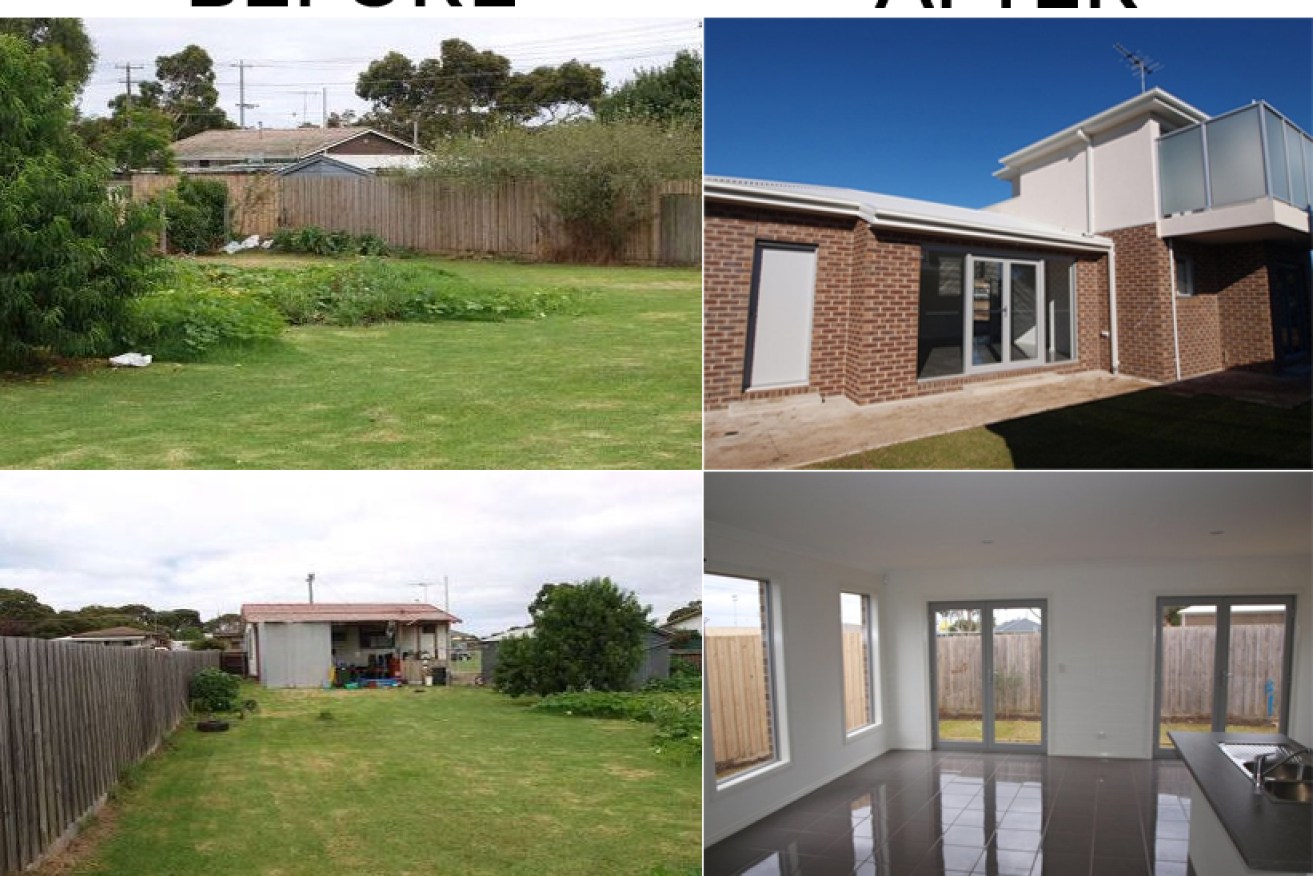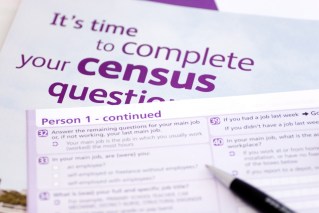Could you be sitting on a fortune in your backyard?
In early September, marriage celebrant Ian Mitchell, 62, and his wife Lyn received a welcome surprise in the mail – council approval from the City of Geelong for their second subdivision.
Their first, a property in Norlane, a northern suburb of Geelong in Victoria, would earn them an estimated $100,000 in profit (after expenses) if they sold all three, and they hope to replicate their success.
Without selling, the rental income from the three properties is exceeding the couple’s monthly mortgage repayments by “huge amounts”.
• Hidden costs to blow your property budget
• The risks of using your mortgage for spending money
• More Australians priced out of capital cities
Bought as an investment, the couple kept the existing house and added two units in the backyard. All three dwellings – each with its own title – are now rented out and “doing very, very well,” according to Mr Mitchell.
Mr Mitchell has been buying property for 35 years, and says the subdivision is by far his most profitable venture to date.
“This is the best investment I’ve ever made, and it’s the greatest amount of profit I’ve ever made in a short turnover,” he says.
“I wish I had’ve done subdivision some years ago now. We would be in a far better place if we had gone down that track.”

Ian and Lyn Mitchell’s first subdivision. Source: Supplied.
You may not need to be an investor to cash in like the Mitchells, but you do need to be aware of the risks.
Property experts tell The New Daily the family home can be demolished or built around without selling up or buying anew – to attempt to turn a profit, free up equity, fund your retirement, or even provide an extra dwelling for a family member.
Property Subdivision Corporation Australia’s (PSCA) Rita Moore says a subdivision is a “possibly lucrative exercise” that rarely significantly reduces the value of your original home, despite cutting backyard space.
“You also get to stay where you are without the cost and inconvenience of re-locating,” Ms Moore says.
The process typically takes between nine and 14 months, according to Ms Moore.
There are certainly risks, warns Perth property developer Ventura iD‘s Kerrian Devlin, but the rewards “can be enormous” if you have done your market research and partnered with a good builder.
Dale Alcock Homes general manager Dean O’Rourke says if you have a large block with the right zoning, retaining your current home and building a house behind could be a great way to build wealth.
But the process is never as simple as marking out a spare 300 square metres in your backyard and then picking out a new display home, Mr O’Rourke says.
“Getting out the Bobcat before doing the appropriate research or due diligence is a mistake.
“Do your research and homework before you make any decisions,” he says.
The options
You must first ensure your property is suitably sized and configured.
Dale Alcock Homes general manager Dean O’Rourke says there are three options.
Battleaxe: create a rear property with side driveway access.
Side-by-side: split your property length-wise so both homes have street frontage.
Multi-unit house: demolish your old house and build a duplex, triplex or quadruplex.
The checklist
Is it worth it?
The value of your property, what mortgage you owe against it, the finance you can obtain and whether or not it will be profitable should be your first consideration.
Talk to your bank
If you have an existing mortgage, the bank needs to consent to the registration and release of any newly created titles.
Leave it to the experts
This is Ian Mitchell’s biggest piece of advice. “You maybe tend to think, ‘Oh, I could do that’, but even though we’ve had a great success story, I would never do it myself,” he says. Subdivision experts like PSCA could be an option.
Get in the zone
Every parcel of land has a zoning, which is basically a rule book that tells you what you can do with your property. These vary between blocks, suburbs and states, and you will need council approval.
Beware legal pitfalls
There are also easements and overlays to worry about. Seek out good advice.
Grand designs
Another consideration is a good, value enhancing design for the new dwellings you build.
Title
There are many types of land titles. For example, you can build first and then split your title later, or you can can choose to subdivide your block without building any new dwellings at all. Best to talk to an expert.
Keep your neighbours happy
You are usually required to advertise your intention to subdivide, and objections can be lodged with the local council, so getting in your neighbours’ good books can only help.
Talk to your friends
Glean anything you can from those you know who have subdivided.









